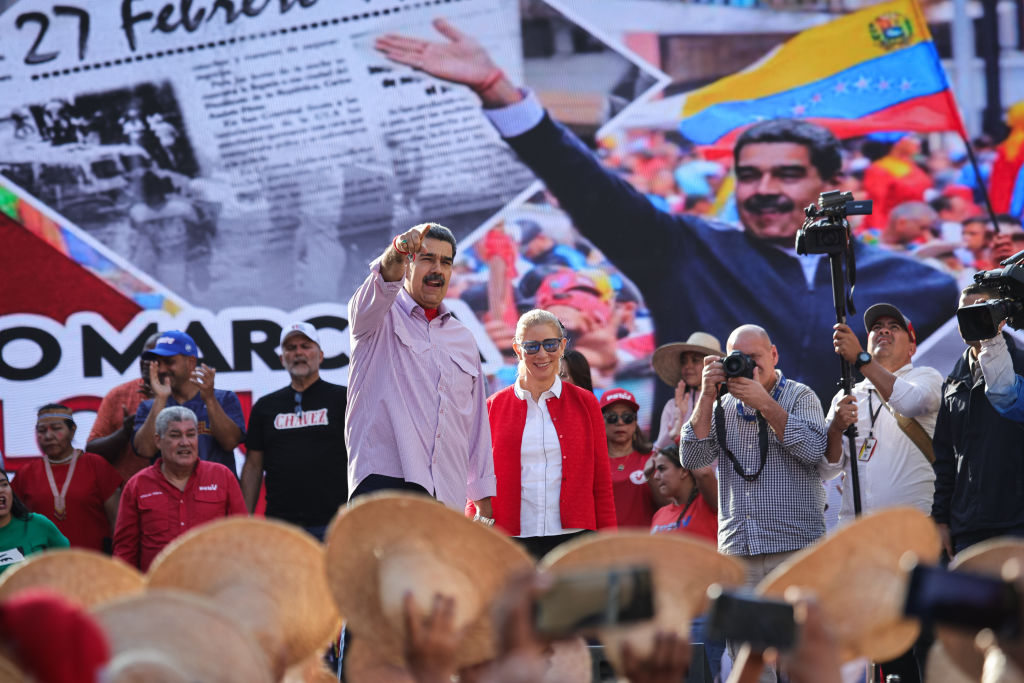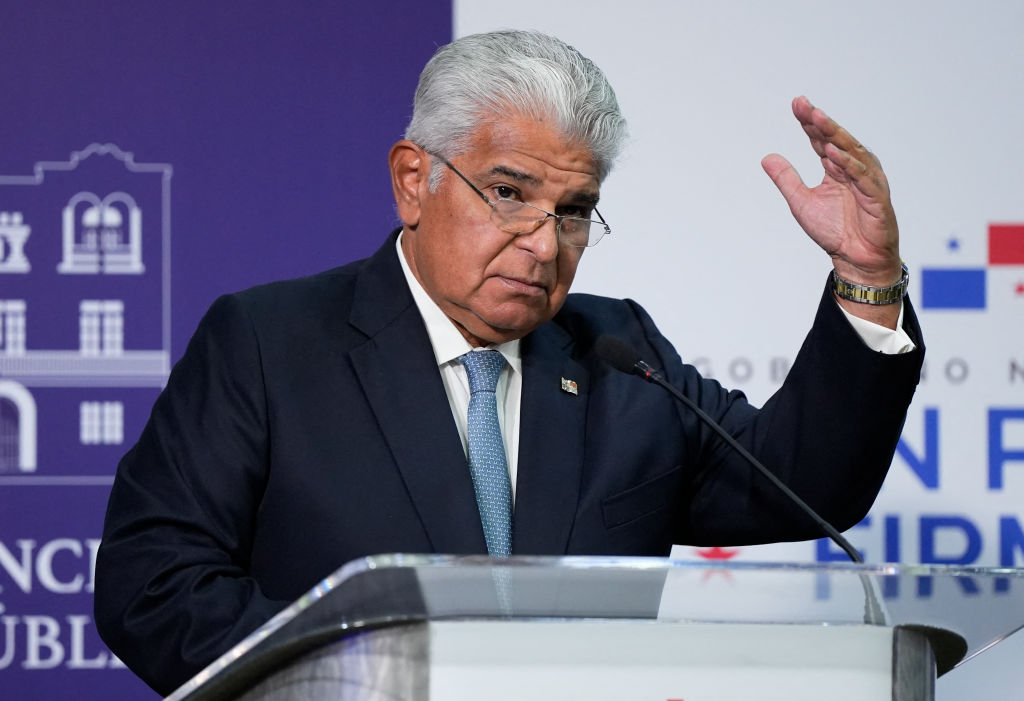Giving Cuba a Seat at the Table: The 2015 Summit of the Americas
Giving Cuba a Seat at the Table: The 2015 Summit of the Americas
The United States can leverage Cuba’s participation to support democracy on the island, writes AS/COA’s Christopher Sabatini for ForeignPolicy.com.
Six months before the next Summit of the Americas takes place in Panama, talk of who will be invited has already overshadowed the agenda of the bi-annual event. Part of this is because, quite frankly, the official agenda has never made much news in the summit’s 20-year history. But the current debate over the invite list has served to bring a long-overdue focus on the most controversial country in the region: Cuba.
At the last summit in 2012 in Cartagena, Colombia, all the Latin American and Caribbean heads of state voted to invite Cuba to the next gathering. The vote, which was opposed by both the United States and Canada, was clearly intended to embarrass the Washington and force a change in its 53-year-old failed policy of imposing an economic embargo on Cuba in an effort to improve the human rights situation.
But far from providing yet another opportunity for the rest of the region to embarrass the gringos, the April summit, where 83-year-old Raúl Castro will join 34 elected heads of state, may finally make the 20-year-old gathering interesting. In fact, it might even make the summit useful. If played correctly, the United States can both leverage this moment for its own legitimate concerns for democracy in Cuba and support its allies in the region.
If Latin American heads of state want to shame the United States into changing its Cuba policy, then Washington should insist that its allies and the summit’s host, Panama, also invite Cuban dissidents and human rights activists.
For the White House, the prospect of Cuba attending the hemispheric gathering raises the genuinely distasteful possibility that President Barack Obama will have to share a platform with the president of a regime with the worst human rights record in the hemisphere. Worse, in their all-too-familiar need to publicly stick it to Washington, the presidents of Argentina, Bolivia, Ecuador, Nicaragua, and Venezuela are sure to give Castro, the president of a regime that has controlled the country since 1959, a hero’s welcome. Never mind that at least two of those economies are — along with Cuba’s — teetering on the brink of crisis. (Denouncing the yanquis always makes for a good, grandstanding distraction from domestic woes. Just ask Venezuela’s President Nicolas Maduro.
The Castros and the Cuban government shouldn’t have the right to rub elbows with the other 34 elected heads of state at the Summit of the Americas. When President Bill Clinton convened the first Summit of the Americas in 1994, the founding idea was to unite the region’s democracies under a common vision of creating a Free Trade Agreement of the Americas (FTAA). Naturally, Cuba was excluded.
The hoped-for FTAA soon went off the rails as Brazil balked at joining, preferring instead to double down on the now-floundering Southern Cone common market, Mercosur. But the idea of the summit as an exclusive club of democratic governments remained a central rallying point. At the 2001 gathering in Quebec, Canada, those ideals helped to form the consensus that led to the Organization of American States’ Inter-American Democratic Charter that committed the region to promote and defend representative democratic government.
The charter, which is arguably one of the most progressive, collective, regional normative pacts to defend democracy, was in part a reaction to Peruvian President Alberto Fujimori’s effort to crush representative democracy and keep himself in power. In signing the charter, governments in the hemisphere reinforced their commitment to democratic government in a region historically marked by military coups and human rights abuses.
That commitment remained, even as Venezuelan President Hugo Chávez became the reigning clown prince of the summit circuit in the mid 2000s, first staging an anti-American, anti-free trade parallel rally at the Mar del Plata summit in 2005 and then at the 2009 Trinidad and Tobago summit sidling up to President Obama to hug him and slip him a copy of the anti-capitalist screed Open Veins of Latin America.
The consensus around democracy and creating an exclusive club of elected governments changed at the 2010 summit in Colombia where 33 heads of state (the Ecuadorean President Rafael Correa sat out the meeting to protest Cuba’s exclusion) called for Havana to be invited to the next regional meeting. Even the host and U.S. ally President Juan Manuel Santos echoed that sentiment when he later stated clearly: no Cuba, no summit. The host of next April’s presidential grip-and-grin, Panama, another stalwart U.S. ally, has already confirmed that it will invite the autocrat from Havana.
This puts Washington in a quandary. Should the United States sit out the regional forum that it created 20 years ago to protest Cuba’s invitation, isolating itself from regional public opinion and even its allies? Or should Obama go and risk being humiliated by loud criticism from the region over its unpopular 53-year embargo and risk being seen rubbing elbows with the oldest autocrat in the hemisphere? The latter will surely inflame the shrinking segment of Cuban-American hardliners and the very active Cuban-American national legislators, including three representatives from south Florida, Robert Menendez, the Democratic senator from New Jersey, and two possible Republican presidential candidates, Sens. Marco Rubio (FL) and Ted Cruz (TX).
But there is a way for Obama to balance these pressures, making the most out of the summit without looking to cave to the regime in Havana. As Richard Feinberg argues in the fall issue of Americas Quarterly, the administration should use the summit as an opportunity to focus the president’s attention to assert his executive authority to update its Cuba policy. This could include expanding the categories for travel licenses to Cuba (tourism is illegal under current law), opening up telecommunications licensing and commerce with the island, and granting greater scope to businesses working on financial services and trade to collaborate with the island’s growing entrepreneurial sector. Such an executive-led effort would leave a powerful legacy on a policy that was founded more out of revenge than any rational attempt to force peaceful change or protect human rights.
Admittedly, swallowing national pride, attending the summit in Panama, and reforming policy toward Cuba might be difficult for the United States. The Obama administration doesn’t want to be seen bending to regional demands. But the costs of not going to Panama are even greater. The United States will look cowardly if Obama stays home to avoid coming face-to-face with 83-year-old Raúl.
Policymakers in Washington should remember that when the United States has responded to regional consensus in the past, the results have been positive. In the late 1980s and early 1990s, efforts led by Costa Rican President Oscar Arias Sanchez, along with the Contadora Group of Colombia, Mexico, Panama, and Venezuela, eventually brought an end to the Central American civil wars. While conservatives in Washington groused about the process, fearful that it undermined Reagan-era policies to isolate the Sandinista government in Nicaragua and wipe out Marxist guerrillas in Central America, the result — peace, elections, and by 2005 a free trade agreement between Central America and the United States — was inarguably one of the most successful policy initiatives in the hemisphere in the past 50 years. Washington endorsed and supported the regional initiative. In retrospect it was clearly the right decision.
Responding positively to Latin America’s request for Cuba’s inclusion would also give real meaning to the long-abused and often hollow U.S. rhetorical trope for the region: partnership. The idea of hemispheric partnership extends back to John F. Kennedy and the Partnership of the Americas development program. It has been a touchstone in U.S. policy speeches about the region, though more often than not partnership has left Latin American countries the junior partners, following Washington’s lead on issues from defending democracy to encouraging development. By embracing its oft-steamrolled “partners” on including Cuba in the upcoming summit, the United States would signal a new era of collaboration and recognition of past policy failures.
But with partnership should come reciprocity. Two factors motivate Latin American’s desire to invite Cuba — despite Havana’s violation of the original, democratic commitment of the summit. First, some of the Latin American countries, especially Argentina, Bolivia, Ecuador, Nicaragua, and Venezuela, have a default policy of trying to stick it to the United States whenever possible. But other countries, such as Chile, Colombia, Mexico, Panama, and Peru, have a genuine desire to forge a more constructive atmosphere in the hemisphere and help ease Cuba into the global order, especially as the Castros’ biological clock nears its end.
If the White House says it will only attend the summit if independent Cuban dissidents and human rights activists are also invited, it can send an important message to Cuba and the rest of the anti-U.S. forces in the hemisphere without sacrificing the benefits that come with attending the summit. Since the 2001 summit in Quebec, civil society has been permitted to attend the conference and has staged a parallel civil society forum. These civil society discussions have all the policy import and impact of a high school Model United Nations conference. But if Cuban dissidents are invited, they should be given more weight and a better reception.
President Santos of Colombia and other leaders in the region, including Obama, should publicly meet with civil society figures. Activists such as Antonio Rodiles of Estado de Stats have embraced the idea of gaining a platform with their repressors. And an invitation to independent blogger Yoani Sánchez would give her and her online journal 14ymedio the opportunity to cover an event that has been largely unknown to most Cuban citizens in its 20 years of existence.
Permitting Cuban independent civil society to participate as equals at the Summit of the Americas will send a strong signal that this gathering is more than just another talk shop for hemispheric blowhards. It will demonstrate that the summit process really is about democracy, transparency, and accountability.
The summit’s original democratic ideals will be violated with Raúl Castro’s participation. But allowing independent Cuban civil society leaders to attend and openly speak their opinions — something that can often earn them detention, harassment, and other punishments back home — will ensure that Cuba’s representation at the summit will be democratic, even if its head of state is not.
For presidents like Michelle Bachelet of Chile and Dilma Rousseff of Brazil and the other leaders who have endured autocratic regimes and come to power through elections, ensuring that Cuban independent leaders get a seat at the table is the least they can do to ensure that meaningful, democratic change comes to Cuba along with change in U.S. policy toward the island.









